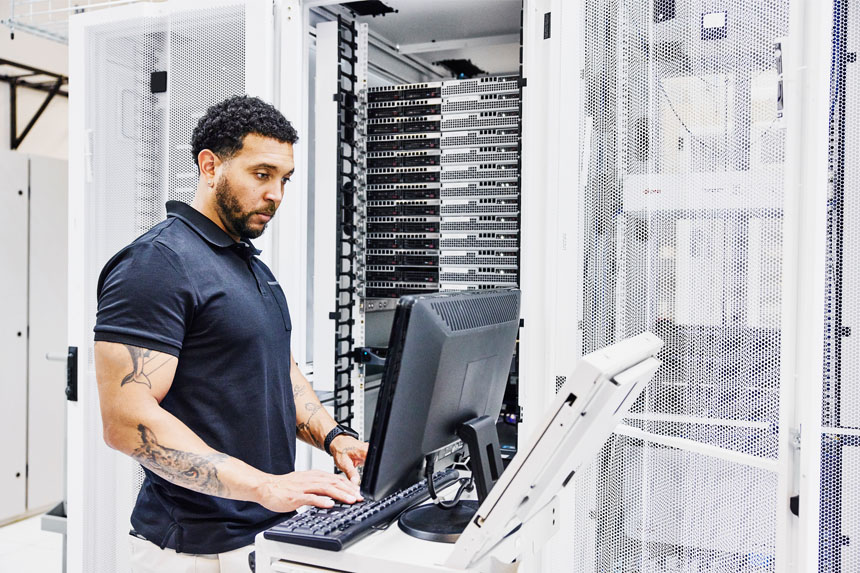It’s a new age of personalized technology. These days, we are accustomed to opening our phones with our fingerprints, and our faces. We can even unlock our cars through simple voice recognition.
This type of identity recognition technology is referred to as “biometric technology,” and it has significant implications in the healthcare sector. Biometrics such as fingerprint scanners, palm vein readers, facial recognition, iris scanners, and others, have long held promise to tighten up identification of patients and employees. And biometrics have more use cases than just identification; it can drive the entire patient experience.
Here are three ways biometrics can help improve hospital performance and, by extension, the patient experience: combating fraud, reducing administrative tasks, and providing assistance with language barriers.
1. Biometrics fights healthcare fraud
Healthcare fraud is a major concern at the moment; the rising number of cyber-attacks has actually resulted in the Department of Justice’s recent antitrust enforcement update, in order to help manage cyber-related issues like healthcare fraud and false claims cases.
Individuals can commit healthcare fraud by providing false information when applying for programs or services, forging or selling prescription drugs, using transportation benefits for non-medical related purposes and loaning or using another’s insurance card. By nature, biometrics can help greatly reduce healthcare fraud. Fraudulent activities can not only affect healthcare providers’ short-term revenue, but also reputation among patients – thereby affecting the long-term bottom line as well.
While no system is foolproof, biometric recognition provides vastly more accurate readings when it comes to identifying patients because they measure a unique physical trait versus a piece of knowledge (passwords, social security number, PIN). Biometric authentication can eliminate any possibilities of individuals attempting to pose as other patients for access to treatments and medication. This would also help reliably verify that patients are who they say they are, and guarantee caregivers are working with the proper medical and demographic information.
For care providers, this technology can be essential. In hospitals, there are often certain areas that are restricted: only accessible by a key card granted to privileged health personnel. Unfortunately, these key cards can be quite vulnerable if misplaced or stolen and can lead to severe breaches that may have life or death consequences.
Biometrics are ideal in these situations because it is nearly impossible to replicate a person’s fingerprint or face to access these restricted areas (unless, of course, it’s James Bond). And, if any instances of malpractice were to occur in the building, biometrics can quickly identify the individual in the area at the time, along with the time they clocked in and out.
According to Definitive Healthcare’s technology data, currently 355 facilities have biometric security systems installed, showing great room for growth in this sector. Imprivata, RightPatient, Crossmatch, and NEC Corporation of America are currently some of the big leaders in this technology.
2. Biometrics reduces administrative tasks
Currently, hospitals and other care organizations need to attract and retain patients in network, and the best way to do so is through improving the patient experience. Shorter wait times, less paperwork, easy scheduling capabilities are all essential to improving your facility’s revenue stream and provider performance.
Biometric technology can help solve for this problem by quickly identifying, and signing in, patients. Gone are the days of filling out documents, online scheduling, and registration intake forms. And, with this streamlined patient identification, it can be easier than ever to consolidate millions of health records, diagnoses, tests, medications, and treatments – without any misidentifications or patient record overlaps.
For providers, biometrics can help providers replace passwords, tokens, cards, passwords, and PINs while still protecting the patient record. This type of easy sign-in can help providers instantly access the records they need, saving time and money, reducing clerical errors, and greatly easing the cognitive burden for care providers.
3. Biometrics solves for language barriers and improves telemedicine, EHR/EMR systems
Voice biometrics will be key to improving hospital performance in three ways:
- Solving for language barriers: Biometrics could greatly improve the delivery of treatments if there are communication issues between healthcare workers and patients. For instance, if a patient cannot communicate their illness or symptoms, a provider can scan the patient’s voice, access his or her records with all known issues and help to correctly identify the problem.
- Reducing telehealth fraud: Telemedicine has become a more common method for improving access to care in rural or underserved geographies. Voice authentication can be used for more secure and convenient login to telemedicine portals and can help physicians quickly and securely access the patient’s medical record.
- Improved EHR/EMR scribing: Voice recognition, when paired with artificial intelligence, may soon become a common ‘background’ technology during clinical encounters – acting as a scribe, clinical documentation assistant and, potentially, a decision support tool. Currently, this type of technology is still in progress, but when developed will be able to make great strides in provider cognitive overload and improve clinician-patient relationships.
What’s next for biometrics?
For some, biometrics are a concerning prospect. Hospitals and caregivers identifying patients based on biologically unique traits? How would this be stored and protected, with such sensitive, personal information?
Looking ahead, many anticipate that artificial or augmented intelligence will be the bridge that helps this technology see greater installations. The combination of biometrics with AI creates the ability for the resulting hybrid technology to not only recognize and identify the patient in question, but also “learn” from user provides that are built over time - how the individual walks, behaves, talks, etc. This type of accuracy would be second-to-none, and greatly reduce any potential healthcare fraud.




